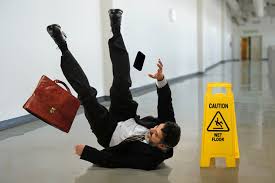Slip and fall accidents are a common cause of injuries, leading to numerous lawsuits every year. These incidents can occur anywhere, from grocery stores and office buildings to private homes and public sidewalks. A slip and fall lawsuit is a legal claim filed by an individual who has suffered injuries due to slipping, tripping, or falling on someone else’s property. This article will delve into the intricacies of slip and fall lawsuits, including the legal basis for such claims, the process of filing a lawsuit, and key factors that influence the outcome.
Legal Basis for Slip and Fall Lawsuits
The foundation of a slip and fall lawsuit is premises liability, a legal concept that holds property owners and occupants responsible for accidents and injuries that occur on their property. To establish a successful slip and fall claim, the plaintiff (the injured party) must prove the following elements:
- Duty of Care: The property owner or occupier had a legal duty to ensure the safety of the premises.
- Breach of Duty: The owner or occupier breached this duty by failing to maintain a safe environment.
- Causation: The breach of duty directly caused the plaintiff’s injury.
- Damages: The plaintiff suffered actual harm or losses as a result of the fall.
Common Causes of Slip and Fall Accidents
Slip and fall accidents can result from various hazardous conditions, including but not limited to:
- Wet or slippery floors
- Uneven or cracked sidewalks
- Poor lighting
- Loose or missing handrails
- Obstructed walkways
- Torn carpeting or loose rugs
Filing a Slip and Fall Lawsuit
Filing a slip and fall lawsuit involves several steps:
- Seek Medical Attention: The injured party should immediately seek medical care to document the injuries.
- Report the Incident: It is crucial to report the accident to the property owner or manager and obtain a written report.
- Gather Evidence: Collect evidence such as photographs of the accident scene, witness statements, and medical records.
- Consult an Attorney: Seek legal advice from an attorney specializing in personal injury and premises liability law.
- File the Complaint: The attorney will file a formal complaint in court, outlining the details of the accident and the basis for the claim.
- Discovery Phase: Both parties exchange information and gather evidence to build their cases.
- Negotiation and Settlement: Often, parties may reach a settlement agreement to avoid a trial.
- Trial: If a settlement cannot be reached, the case proceeds to trial, where a judge or jury determines the outcome.
Key Factors Influencing Slip and Fall Lawsuits
Several factors can impact the outcome of a slip and fall lawsuit:
- Comparative Negligence: In some jurisdictions, if the plaintiff is found partially at fault for the accident, their compensation may be reduced proportionally.
- Statute of Limitations: Slip and fall claims must be filed within a specific time frame, which varies by state.
- Credibility of Evidence: The strength and credibility of evidence, including witness testimony and documentation, play a crucial role.
- Property Owner’s Actions: The owner’s knowledge of the hazard and the steps taken to address it are critical in determining liability.
- Plaintiff’s Conduct: The plaintiff’s actions at the time of the accident, such as appropriate footwear or attention to surroundings, are also considered.
Conclusion
Slip and fall lawsuits are complex legal proceedings that require a thorough understanding of premises liability law and meticulous preparation. Victims of slip and fall accidents must act promptly to protect their rights and seek appropriate compensation for their injuries. Consulting with an experienced personal injury attorney can significantly enhance the chances of a successful outcome, ensuring that the injured party receives fair compensation for their losses.





